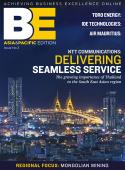A breath of fresh air┬áThe US Army post at Fort Carson is being greatly expanded under the militaryÔÇÖs Base Realignment and Closure Program. Major Mark Himes of the US Army Corps of Engineers tells Ruari McCallion about the changes. Southwest of Colorado Springs, Colorado, between Interstate 25 and Highway 115, is the US ArmyÔÇÖs Fort Carson. Known as ÔÇ£the Mountain Post,ÔÇØ it has been described as the best hometown in the Army. Being a nice place is not an essential element of military needs, however; its agenda is much more focused on suitability for purpose. The US Army Corps of Engineering (USACE) has been challenged under the terms of the Base Realignment and Closure Program (BRAC 2005) to greatly expand the capacity of Fort Carson in terms of accommodation and resources. The 3,762 soldiers of the 2nd Brigade, 2nd Infantry Division have restationed at Fort Carson from Korea, and the 4th Infantry Division Headquarters and its 1st Brigade Combat Team are relocating from Fort Hood, Texas.┬á┬áAltogether, it means a lot of construction work at Fort Carson, growing its population dramatically by around 12,000 troops, to around 29,000, by 2015ÔÇöand that number does not include the soldiersÔÇÖ families.ÔÇ£WeÔÇÖve completed a new brigade complex for the re-stationing of the 4th Infantry Division,ÔÇØ says Major Mark Himes of USACE, ÔÇ£which includes the Brigade Battalion HQ center, dining, barracks and company operations facilities, as well as tactical equipment maintenanceÔÇöthe motor pools and vehicle services. That makes up the main brigade footprint.ÔÇØ ItÔÇÖs quite a footprint, extending to around 400,000 square feet, and USACEÔÇÖs work at Fort Carson is far from over.ÔÇ£WeÔÇÖre building accommodation and facilities for units arriving or already at Fort Carson that are not part of the 4th ID,ÔÇØ says Himes. ÔÇ£This spring weÔÇÖre beginning construction of another brigade complex, which will be similar to the existing new facilities. It will include the same functions and also have a physical fitness center. A number of different facilities are already under construction, under way or planned for the next few years.ÔÇØThe reason for the expansion of Fort Carson is the reorganization of the ArmyÔÇÖs military bases under BRAC 2005. Some bases are being closed, others maintained and some expanded, to create a structure better suited to the ArmyÔÇÖs needs in the 21st century. The need at the expanded Fort Carson is for quality buildings, designed and delivered in 15 months. The military is now specifying that new buildings must achieve at least LEED Silver certification, too. ItÔÇÖs quite a challenge and has required a change in the way USACE works, both internally and with outside contractors. ÔÇ£LEED is an additional requirement on us and requires different design standards,ÔÇØ says Himes, but USACE does not see it as a burden. ÔÇ£ItÔÇÖs what we strive to deliver anywayÔÇösustainable construction, high performance capabilities, more efficient buildings and higher operations levels. It saves money and provides a better environment and a better facility for our soldiers to live, train and work.ÔÇØ However, there is a price to pay in initial capital expenditure.ÔÇ£LEED does have implications for upfront capital requirements, but the benefits outweigh them. And theyÔÇÖre tangible,ÔÇØ he says. ÔÇ£If we build a facility that can save 30 percent energy costs a year, thatÔÇÖs a lot of money over a 50-year lifespan. Light sensors and more daylight, rather than artificial lighting, not only save energy but also make for a better place to work.ÔÇØ And even upfront costs can be better controlled with more effective working, from an earlier stage. ÔÇ£We believe we do a good job in collaborating,ÔÇØ Himes continues. Traditionally, architect, engineers and construction companies did not work together until projects were already well under construction, but they are now given the specifications and they manage the project on a turnkey, design-build basis. Another challenge for USACE is that two- to three-year rotations are not ideal for fostering long-term partnerships with the supply side, but the structure of contracting laws and requirements goes some way toward overcoming this. Certainly, the outcomes have been pretty good. The 1st Brigade Combat TeamÔÇÖs HQ has achieved Gold LEED certificationÔÇöa first for the Army. ÔÇô Editorial research by Joe Louis┬á









